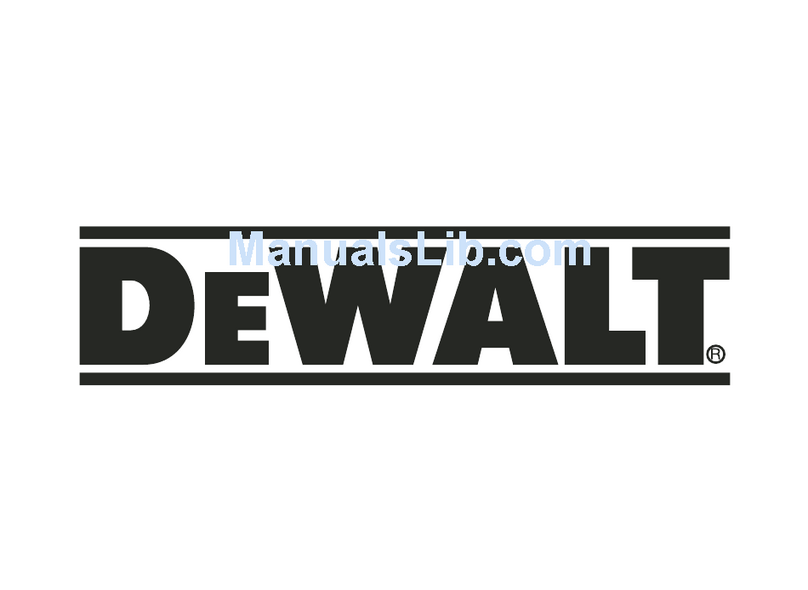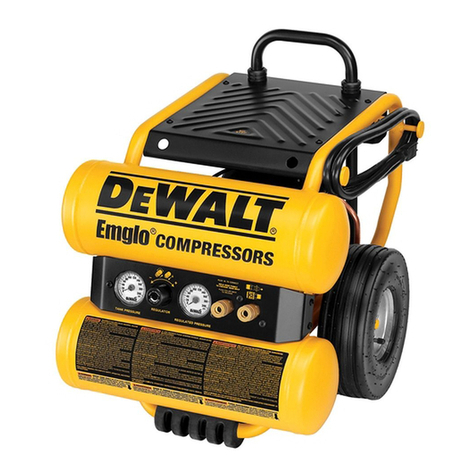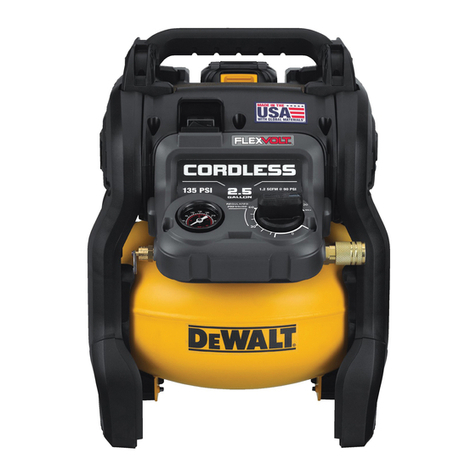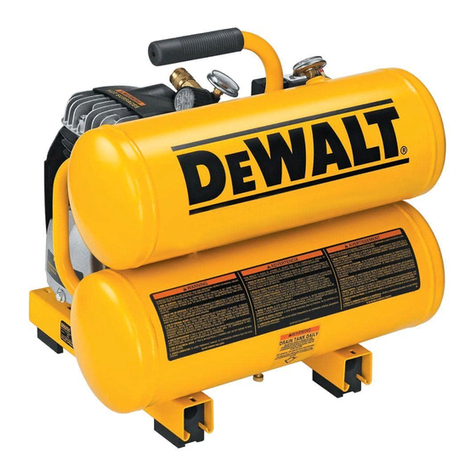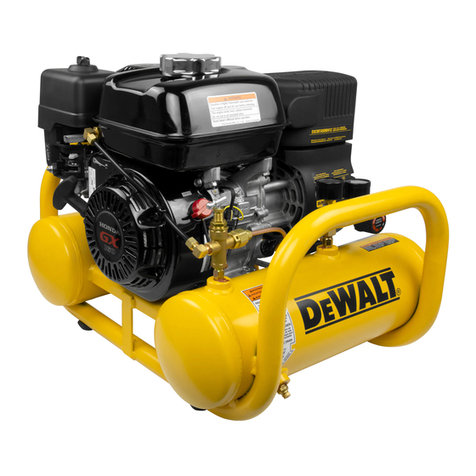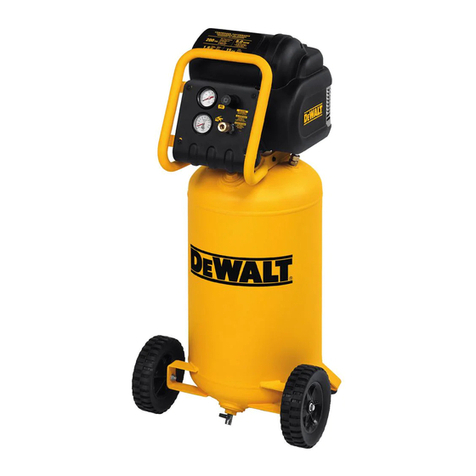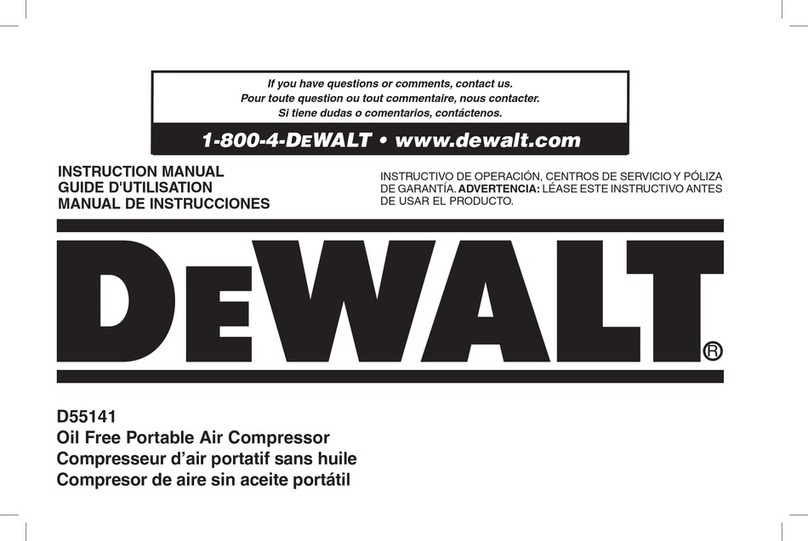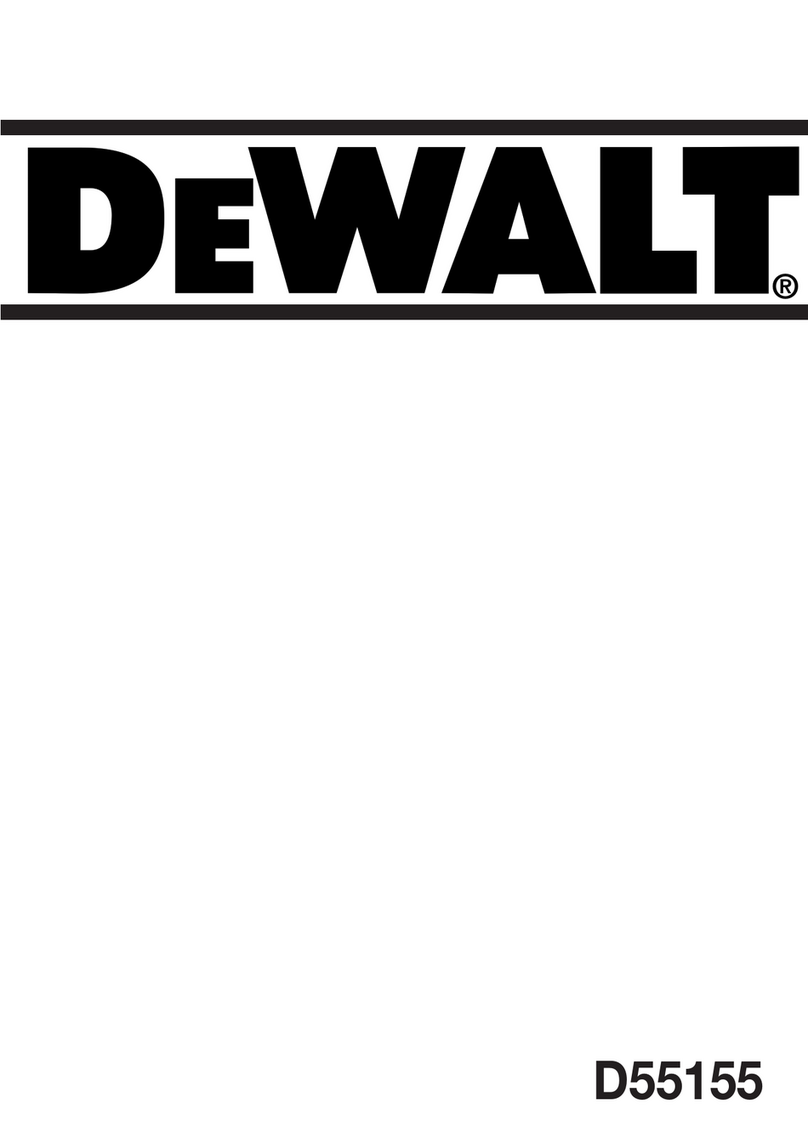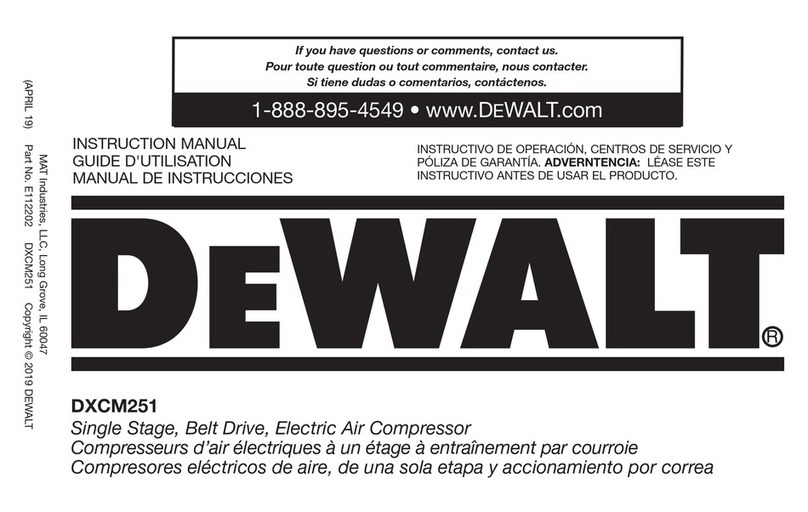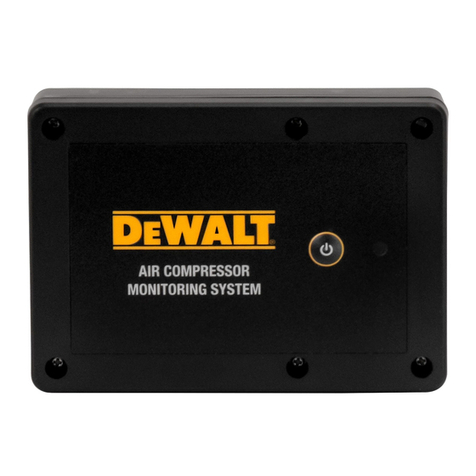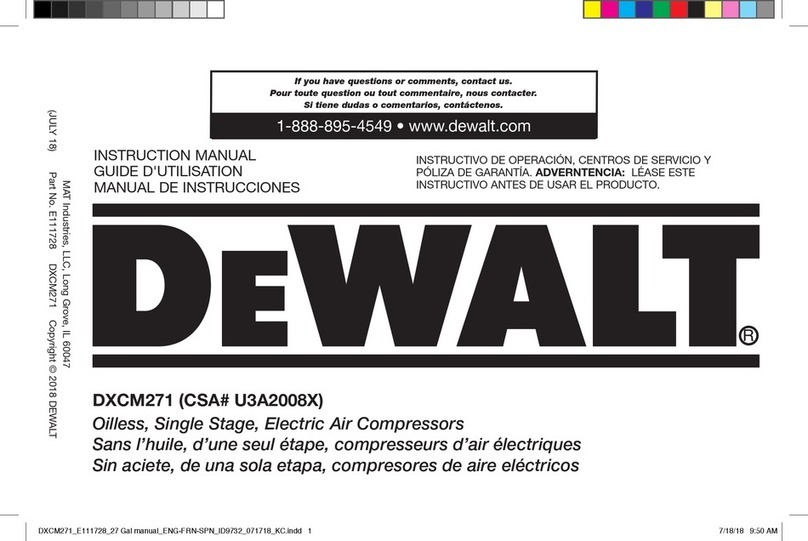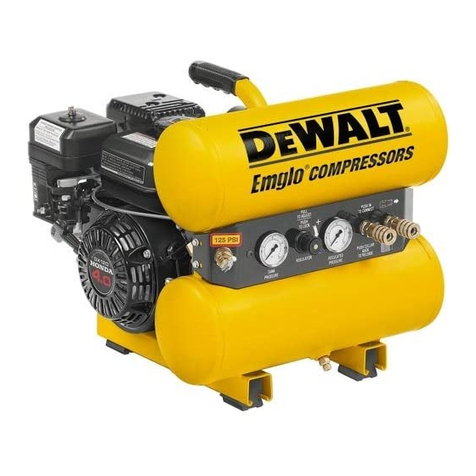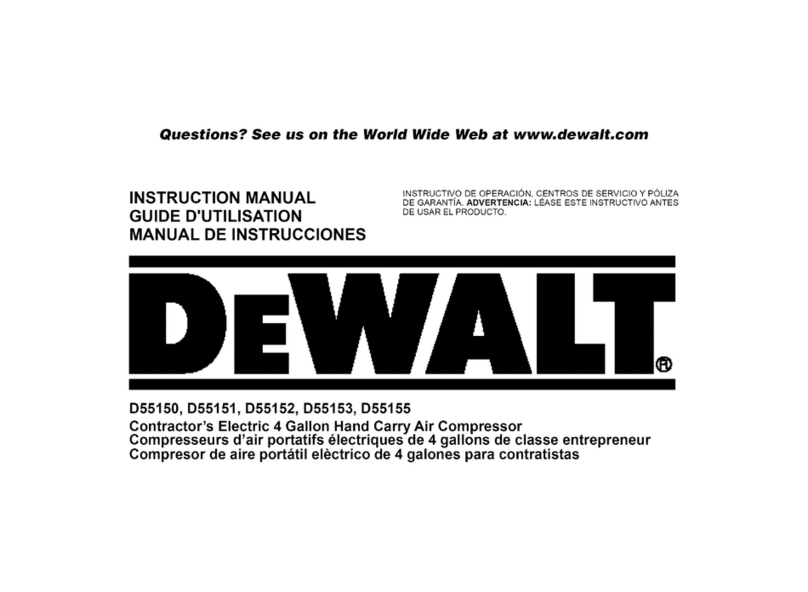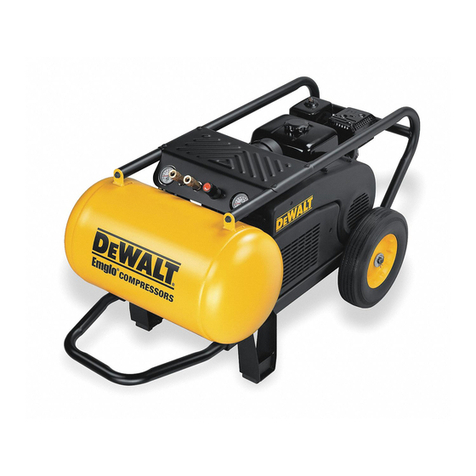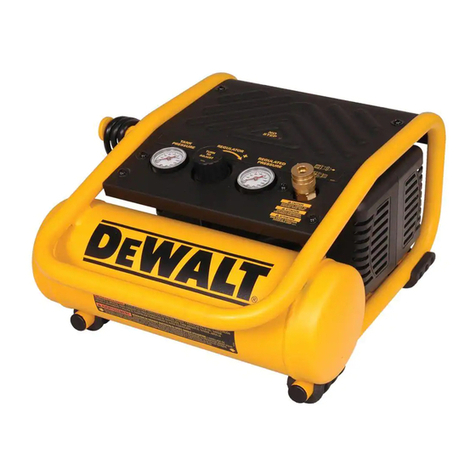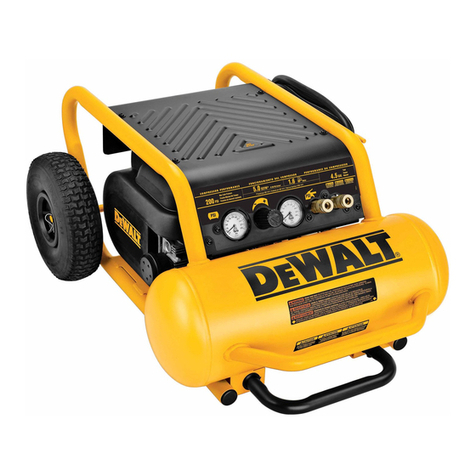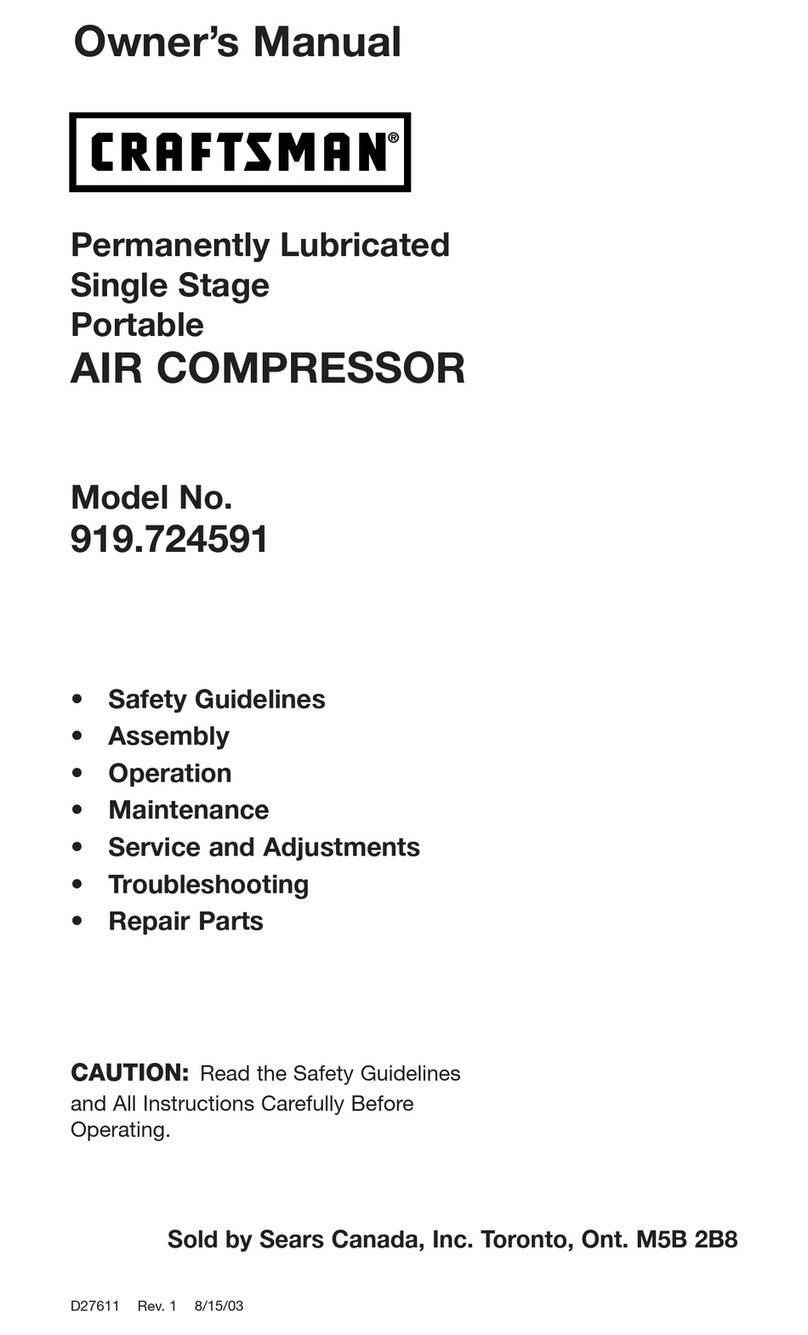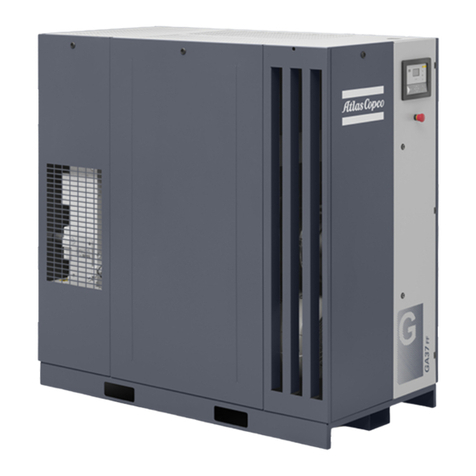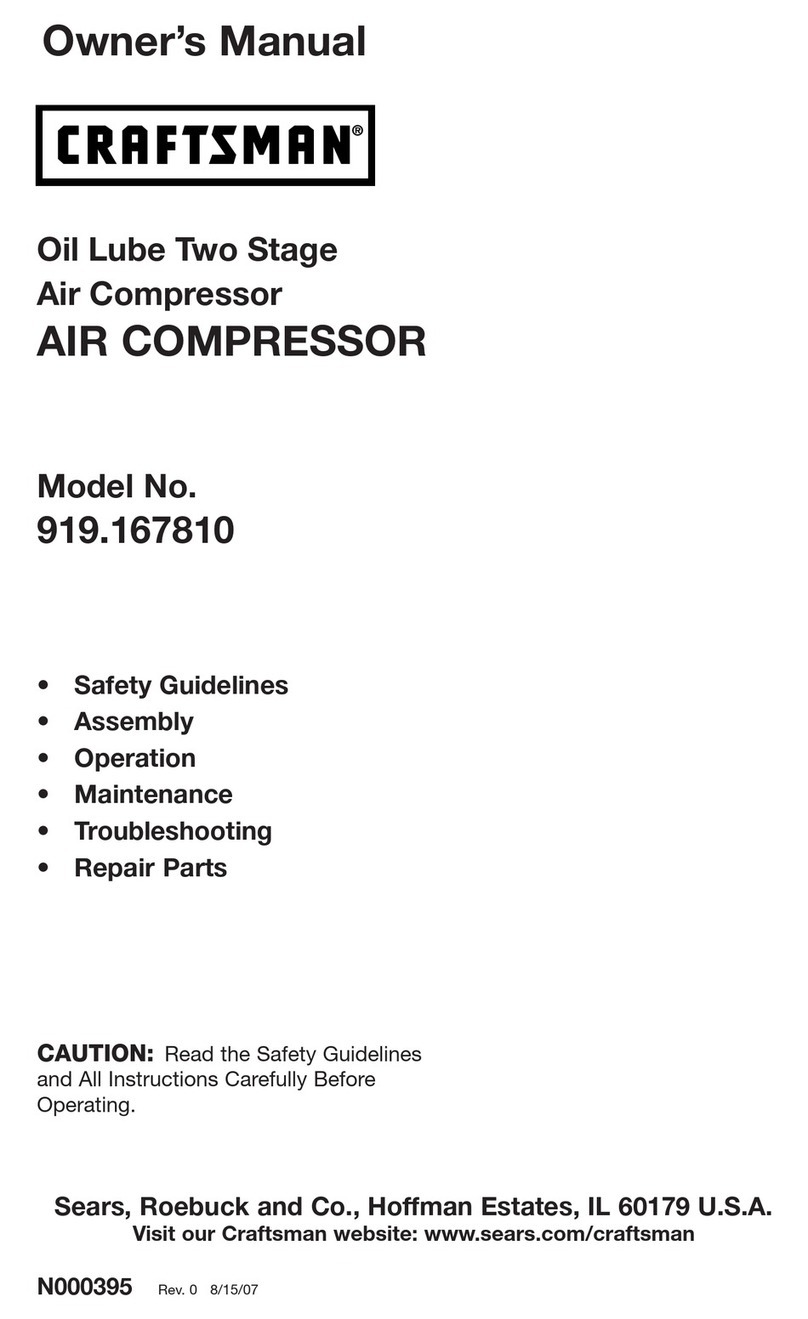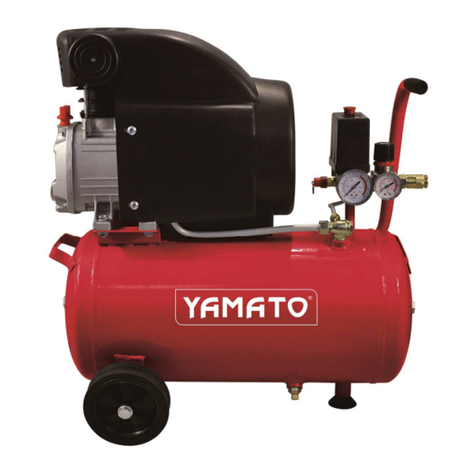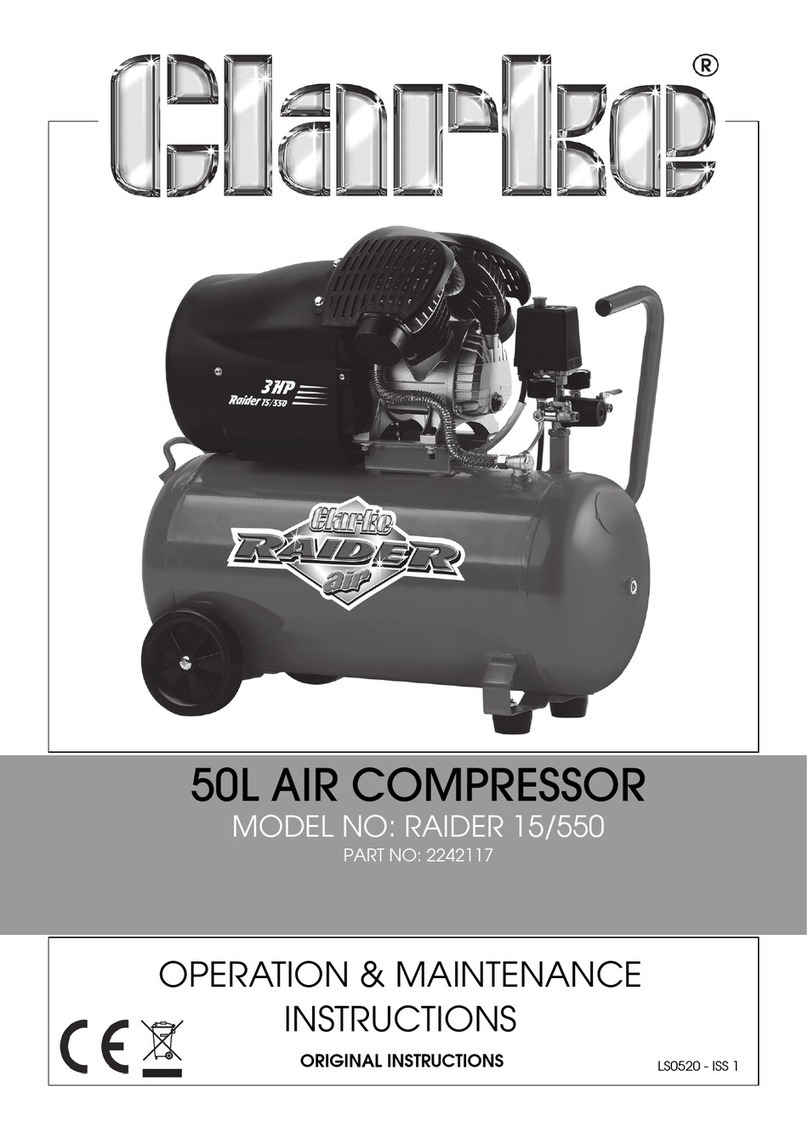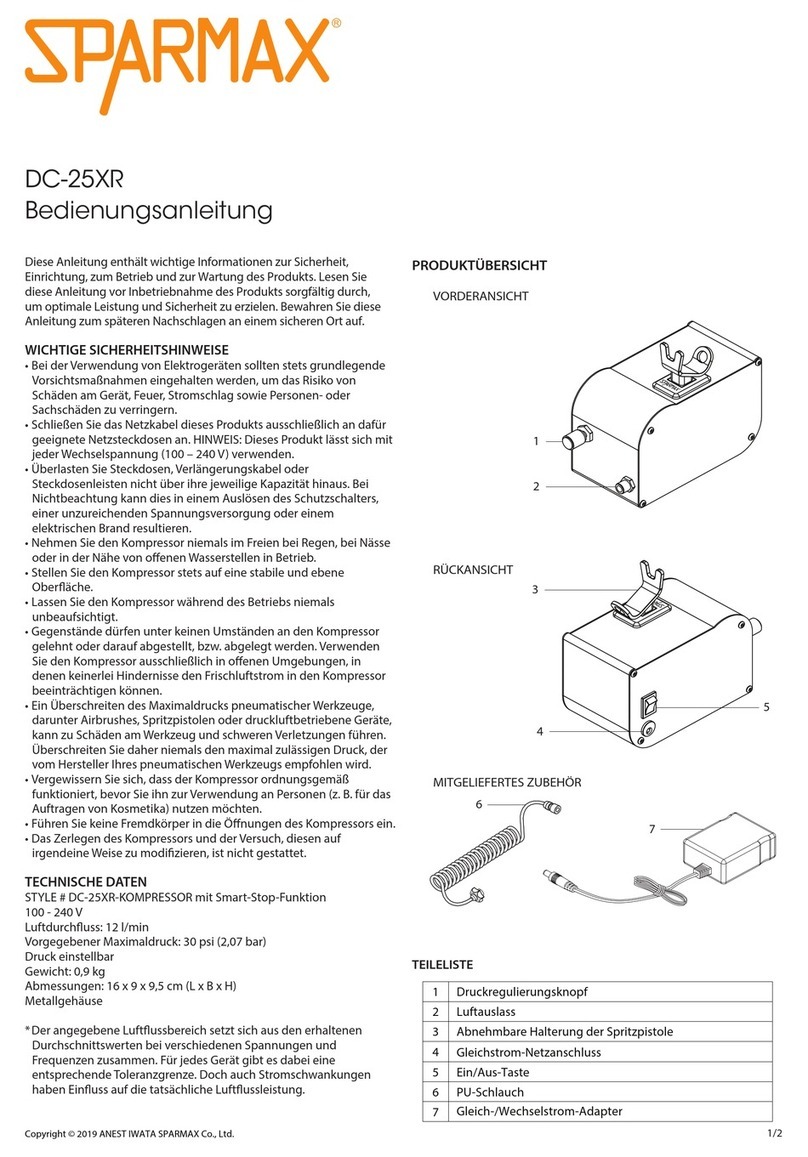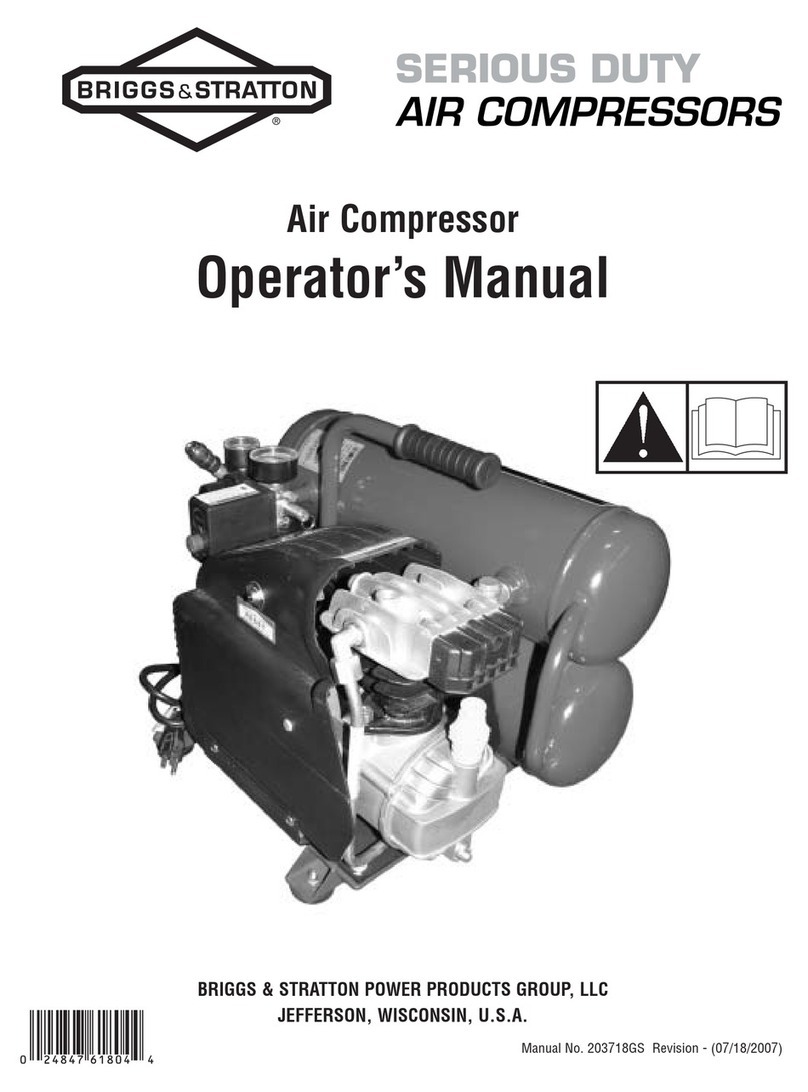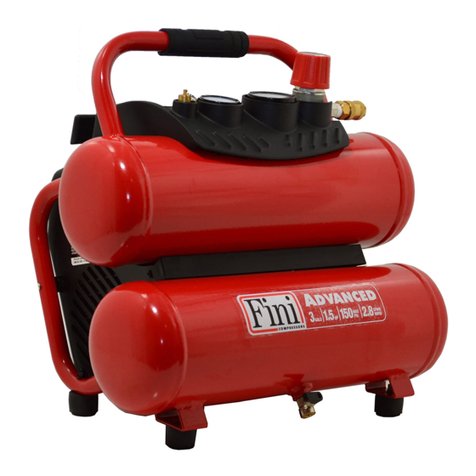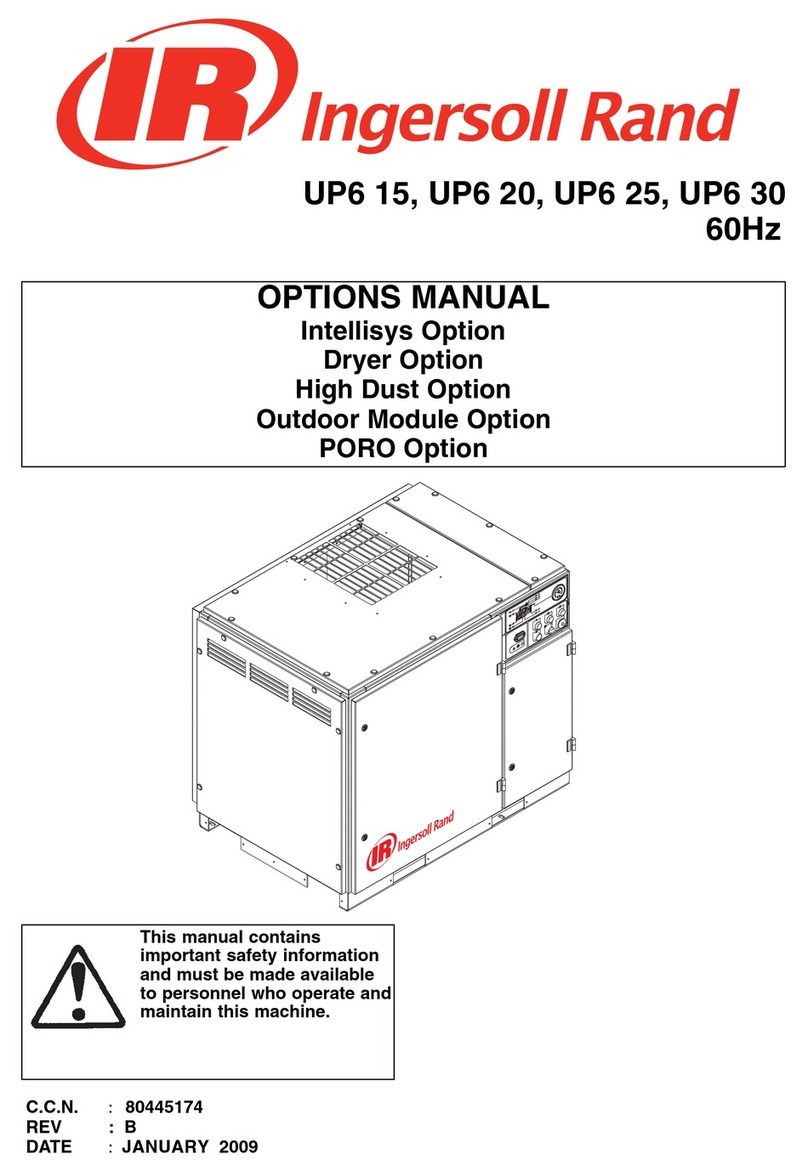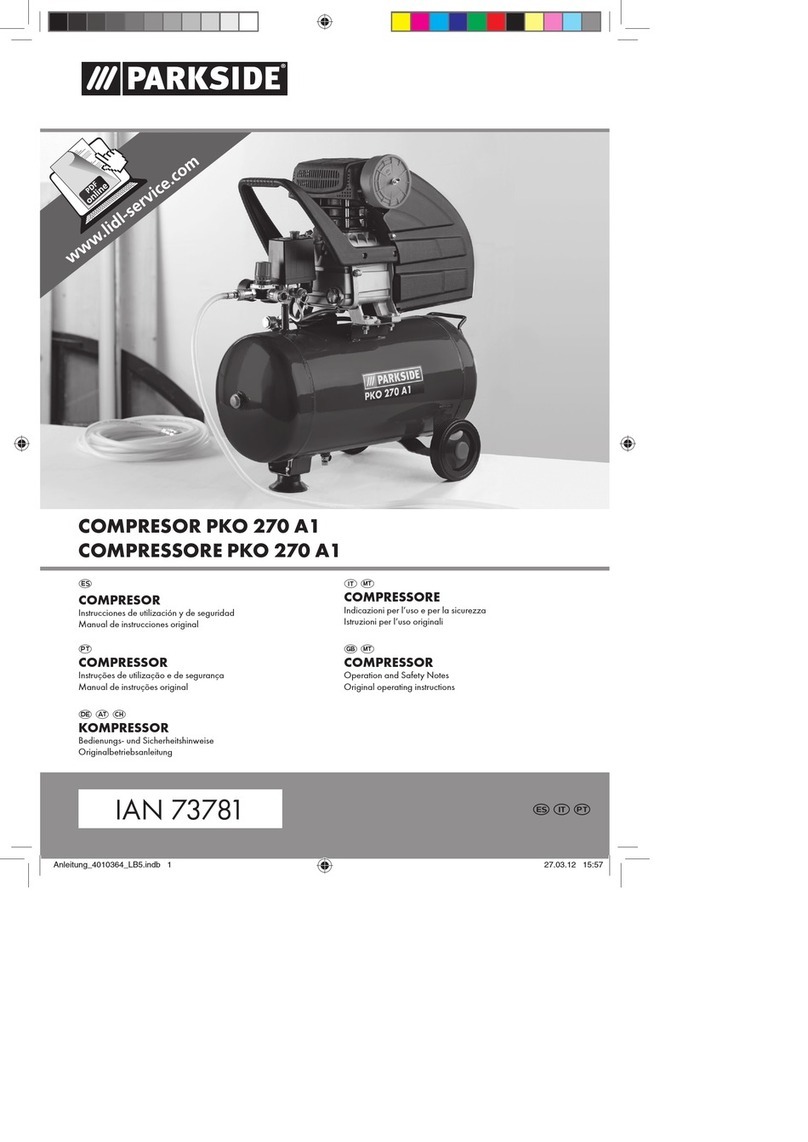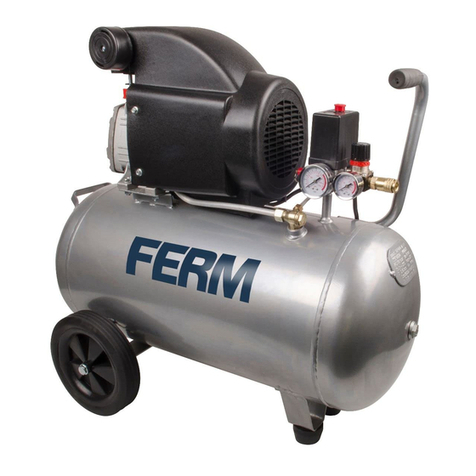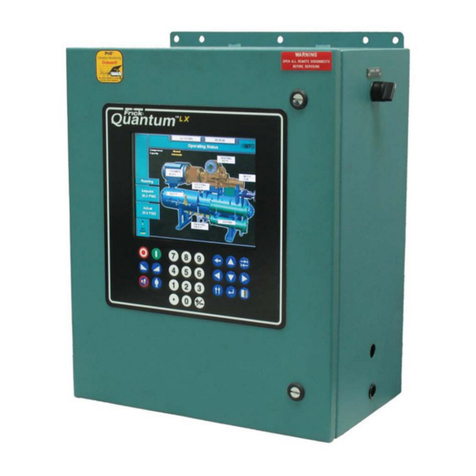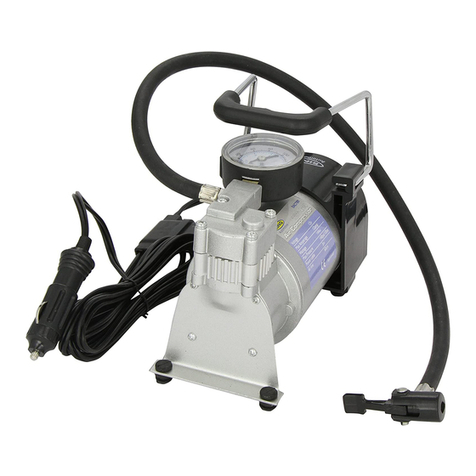ENGLISH
2
SAVE ALL WARNINGS AND
INSTRUCTIONS FOR FUTURE
REFERENCE
DANGER: RISK OF EXPLOSION OR FIRE
What can happen How to prevent it
It is normal for electrical contacts
within the motor and pressure
switch to spark.
Always operate the compressor
in a well ventilated area free of
combustible materials, gasoline, or
solvent vapors.
If electrical sparks from compressor
come into contact with flammable
vapors, they may ignite, causing
fire or explosion.
If spraying flammable materials,
locate compressor at least 20 feet
(6.1 m) away from spray area.
An additional length of hose may
be required.
Store flammable materials
in a secure location away
from compressor.
Restricting any of the compressor
ventilation openings will cause
serious overheating and could
cause fire.
Never place objects against or on
top of compressor pump.
Operate compressor in an open
area at least 12" (30.5 cm) away
from any wall or obstruction that
would restrict the flow of fresh air
to the ventilation openings.
Operate compressor in a clean,
dry well ventilated area. Do not
operate unit indoors or in any
confined area.
Unattended operation of this
product could result in personal
injury or property damage.
To reduce the risk of fire, do
not allow the compressor to
operate unattended.
Always remain in attendance with
the product when it is operating.
Always turn off and unplug unit
when not in use.
CAUTION: RISK FROM NOISE
What can happen How to prevent it
Under some conditions and
duration of use, noise from
this product may contribute to
hearing loss.
Always wear certified safety
equipment: ANSI S12.6 (S3.19)
hearing protection.
DANGER: RISK TO BREATHING
(Asphyxiation)
What can happen How to prevent it
The compressed air directly from
your compressor is not safe for
breathing. The air stream may
contain carbon monoxide, toxic
vapors, or solid particles from
the air tank. Breathing these
contaminant's can cause serious
injury or death.
Air obtained directly from the
compressor should never be
used to supply air for human
consumption. In order to use air
produced by this compressor for
breathing, suitable filters and
in-line safety equipment must be
properly installed. In-line filters
and safety equipment used in
conjunction with the compressor
must be capable of treating air
to all applicable local and federal
codes prior to human consumption.
Sprayed materials such as paint,
paint solvents, paint remover,
insecticides, weed killers,
may contain harmful vapors
and poisons.
Work in an area with good cross
ventilation. Read and follow the
safety instructions provided on the
label or safety data sheets for the
materials you are spraying. Always
use certified safety equipment:
OSHA/MSHA/NIOSH respiratory
protection designed for use with
your specific application.
DANGER: RISK OF INJURY OR PROPERTY
DAMAGE WHEN TRANSPORTING
OR STORING
What can happen How to prevent it
Oil can leak or spill and could result
in fire or breathing hazard; serious
injury or death can result. Oil leaks
will damage carpet, paint or other
surfaces in vehicles or trailers.
Always place compressor
on a protective mat when
transporting to protect against
damage to vehicle from leaks.
Remove compressor from vehicle
immediately upon arrival at
your destination. Always keep
compressor level and never lie
on its side.
WARNING: RISK OF BURSTING
Air Tank: The air tank on your Air Compressor is designed
and may be UM coded (for units with air tanks greater
than 6 inch / 152 mm diameter) according to ASME
Section VIII, Div. 1 rules. All pressure vessels should
be inspected once every two years. To find your state
pressure vessels inspector, look under the Division of
Labor and Industries in the government section of a
phone book or call 1–800–4-


